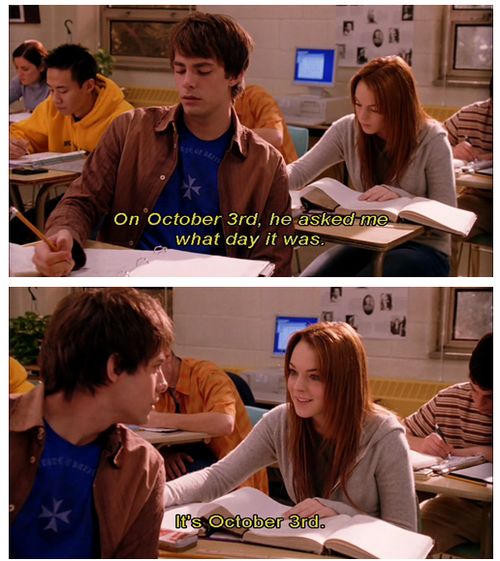Bold Brand Ideas: It’s October 3: Coffee-Mate Unveils Mean Girls Creamer
In the last BIG blog, we discussed a survey of CMOs that concluded marketers must entertain or they risk being ignored. Shrinking newsrooms, a billion online platforms and content overload have altered how people connect with brands. Simply existing or sharing a press release are no longer enough to differentiate. (TBH – that was never really enough.)
PR is undergoing a renaissance with BIG ideas at the center. On-trend, shareable stories can break through to earn relevance in the right places.
Cue: Coffee-Mate. October 3 has become a beloved holiday thanks to Paramount’s Mean Girls.

To celebrate the 20th anniversary of the pop culture hit, Coffee-Mate x Paramount released a limited-edition Mean Girls Pink Frosting Flavored Creamer.
The headlines speak for themselves:




The news was also picked up by foodie bloggers and outlets on Instagram:
View this post on Instagram
IMO: Official partnerships with micro influencers on TikTok (where trending content catches flame) would have made this campaign more fetch. Paramount took advantage of TikTok by posting the entire movie video on its page on October 3.

A celebrity partnership with Aaron Samuels (Jonathan Bennett) could have made this campaign grool, too. Jonathan is now a host on Food Network with an authentic foodie tie to this product launch.
Overall, well done Coffee-Mate. This wasn’t a regular campaign, it was a cool campaign (IYKYK).
Industry Insights: ANA is Releasing an Influencer Pay Equity Guide; What You Need to Know
This section is coming to you fresh from the Association of National Advertisers (ANA) Influencer Trends Conference. The ANA, the 4A’s, the PR Council and their members have partnered in the first-ever industry collaboration of its kind to create the 2023 Influencer Contracts + Pay Equity Guide. Brands of all industries – from Target and P&G to Nationwide Insurance – and agencies (like Belle!) created a set of campaign considerations for more equitable experiences. I graciously had the opportunity to present those guidelines at the recent ANA conference.
Before diving in, let’s take a step back and reflect on the why of the report. The influencer industry is a $21B and growing industry – and for good reason. Brands report earning $5.20 for every dollar spent on influencers. Influencers are worth the investment, and they’re worth doing right.
This massive growth has not yielded the same ROI for everyone. A landmark study, “Time to Face the Influencer Pay Gap,” uncovered a 27 percent racial pay gap between white and Black content creators. Yet, a June 2023 report released by Nielsen and Group Black found that Black creators generate 10.5 times higher media value compared to non-Black creators.
From unequal pay to public backlash, historically marginalized communities face considerable hurdles in the influencer space. Consider these headlines:



To address these disproportionate experiences, the Influencer Pay Equity guidelines were created. The guidelines offer considerations for marketers throughout campaign planning, contract negotiation, and campaign execution.
Equitable pay is based on many factors, such as the influencer’s reputation, reach, engagement rate and content quality. It also is contingent on production requirements, project expenses, usage and exclusivity rights, timeline and more. Ensuring fair payment is a science and an art, and the guidelines help senior marketers break down those nuances.
The guidelines will be released soon. In the meantime, your brand can:
- Create a Rolodex of rates received + campaign payments. Data leads to insight-driven decisions and can help eliminate unconscious bias. Record rates from nano, micro, macro and celebrities. Note what they charge for different types of content (Reels, TikToks, Stories, images, blogs, etc.) The influencer industry is still like the wild, wild west, so these benchmarks are important to ensure you’re not underpaying or overpaying.
- Tell influencers if their rates are below market value. Emerging influencers don’t often have a management team who can negotiate for them. Use your Rolodex of rates to ensure influencers know their worth and all partners are paid fairly.
- Advocate for your partners. Marginalized communities not only experience unequal pay, but they also are more likely to face online hate or backlash. If you’re asking an influencer to advocate for your brand, know how you’ll advocate for them in turn. Remember: Your influencer partners should always share your brand values, so let these values guide your partnership and responses.
- Above all, take a look inward. A diverse team is critical for ensuring inclusive campaigns. Does your team reflect the influencers and/or audiences you’re trying to reach? If not, are you consulting people with other perspectives, experiences and voices?
Goals: Q4 Budget: Allow Me to Introduce You to Allowlisting
It’s officially Q4, AKA the season when senior marketers plot projects for their leftover budget. Use it, or lose it, finance says. Oftentimes the budget is not enough to bankroll a massive campaign, but it is enough to boost EOY results.
If influencers or UGC were a part of your marketing strategy this year, consider allowlisting. Allowlisting (previously known as whitelisting) allows brands to put paid dollars behind an influencer’s content. This practice expands the reach of an influencer’s content and allows for more niche audience targeting. It’s a great way to amplify this year’s top-performing influencer posts and/or UGC. Because of its targeting, allowlisting can help support mid- and lower-funnel goals.
Running influencer ads via allowlisting has proven to be 27% cheaper than brand-owned ads thanks to high impressions + lower cost-per-click rate. Influencers’ content is often seen as more credible and trustworthy than brand-owned content, which means allowlisting marries the authenticity of earned with the conversion of paid. It’s a win-win.
Have dollars to spend and an interest in influencers or paid campaigns? Reach out.

